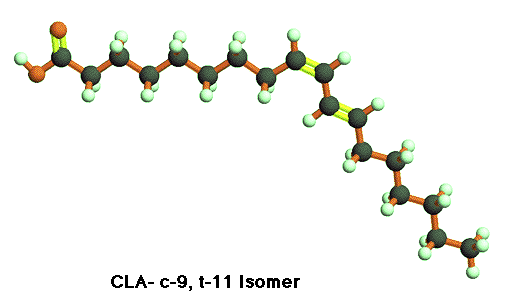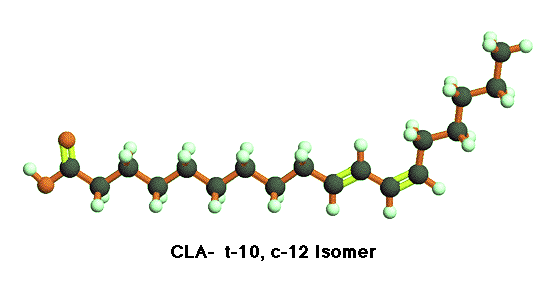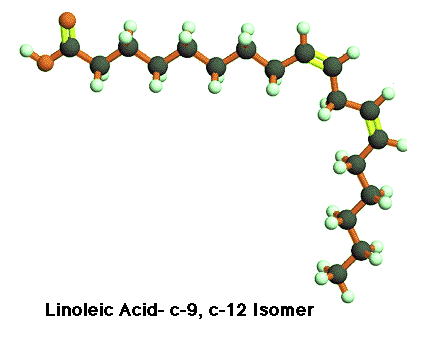CLA Basics
If such a thing as a 'wonder fat' exists, it would have to resemble CLA (conjugated linoleic acid). Oddly enough, a member of the trans fats which have been getting so much bad press of late, CLA is definitely a good fat.
Though aware of conjugated fats in butter as early as the 1930's, scientists didn't discover the structure or properties of CLA until the early 80's. The literally hundreds of studies done since then have revealed an almost unbelievable array of beneficial biological properties, including:
-Muscle growth enhancement/ prevention of muscle wasting
-Inhibition of fat formation/ reduction of body fat
-Improvement of insulin sensitivity
-Inhibition or prevention of various cancers, including breast and prostate, even in low concentrations
-Enhancement of immune system
-Lowering of cholesterol/ reduction of cholesterol oxidation
Top natural sources for CLA in the diet are meat and raw milk from grass-fed animals. Numerous supplements made from vegetable oils are also available.
Due to changes in feeding practices, today's mainstream dairy products have only about 30% of the CLA they had before 1960.
Apparently, there's something in the grass that feedlot cattle just don't get in their diets. Whatever it is, plant pigment, fatty acid building block or other factor, etc., compared to grain-fed, grass-fed animal foods can contain from 3-5 times more CLA.
CLA molecules have 28 possible configurations (isomers), two of which appear to have particularly desirable bioactivity (and greatest scientific interest) at present. Found mainly in animal products, the form called 'cis-9, trans-11 CLA' or rumenic acid, appears to have the greatest anti-tumor properties.
Along with rumenic acid, the trans-10, cis-12 form of CLA also blocks formation of fat cells. Both isomers take their shape from the particular placement of the two double bonds they each contain.
Both active forms are shown below, along with a molecule of linoleic acid, an essential omega-6 fatty acid which, when too abundant in the diet in relation to omega-3 fatty acids, can have undesirable effects on health. It's interesting to see how much impact the placement of a simple chemical bond can have on a molecule's behavior in our bodies. Have you had your CLA today?


